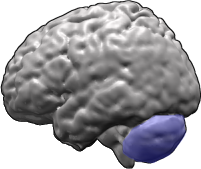Researcher Salvatore DiMauro had never seen anything like it. An 11-year-old boy who had been wheelchair-bound for years was up and walking, thanks to some pills you can buy over the counter.
The patient had a hereditary syndrome called familial cerebellar ataxia. Like other ataxias, it arises from problems with the spinal cord and cerebellum, the part of the brain responsible for orchestrating nerve signals that coordinate muscles. This form of ataxia leaves patients with muscle damage, as well. They slowly lose the ability to walk, perform simple movements, and even talk.
Several years ago, DiMauro, a neurologist at Columbia University College of Physicians and Surgeons in New York, had noticed that muscle tissue from a patient with familial cerebellar ataxia had a deficiency in a compound called coenzyme Q10 (CoQ10). This vitaminlike substance plays an indispensable role in mitochondria--the power generators in cells.
DiMauro and his colleagues gave this patient and five others, including the 11-year-old boy, an expensive, unregulated supplement of CoQ10 available in health-food stores. The patients all improved markedly, the researchers report in the April NEUROLOGY.
All six patients responded better to higher doses of the supplement, and none experienced serious side effects. The 11-year-old improved the fastest. However, most patients continued to need assistance walking and climbing stairs, an indication that the benefits of CoQ10 reach a plateau.
The one patient who now can walk without assistance had shown no symptoms of ataxia until age 16, when she first started losing coordination and veering as she walked. She moved from her home in India to New York and started taking CoQ10 at age 17. Now 21 years old, she works in a computer store, DiMauro says.
"The new finding is very important," says neurologist Christopher M. Gomez of the University of Minnesota in Minneapolis. This particular treatment might help only a limited number of people, he says, but "it may teach us about the molecular basis" of problems in mitochondria that affect the cerebellum in this or other ataxias.
DiMauro and his colleagues still haven't pinpointed the genetic defect that causes the CoQ10 deficiency in familial cerebellar ataxia, but the disease does appear to be hereditary.
Mitochondria collect oxygen and use it to convert nutrients into energy. A defect that causes mitochondria to lack CoQ10 could starve a cell, says Richard A. Willis, a nutrition researcher at the University of Texas in Austin. "If you were able to restore the function [of mitochondria by providing CoQ10], it would make sense that the cell would perform better," whether in muscle or the brain, he says.
As mitochondria make energy, they also produce cell-damaging free radicals as waste products. The antioxidant vitamin E scavenges these free radicals. The vitamin also lessens effects of some forms of ataxia in which mitochondria don't seem to clear free radicals. Instead of helping mitochondria to make energy, CoQ10 could be assisting in this waste-disposal process, says Gomez. Other research hints that CoQ10 might repair broken-down vitamin E, maintaining a supply of this compound, Willis says.
DiMauro and his team are trying to figure out the role of CoQ10 in mitochondria and looking for more patients with familial cerebellar ataxia.
COPYRIGHT 2001 Science Service, Inc.
COPYRIGHT 2001 Gale Group



